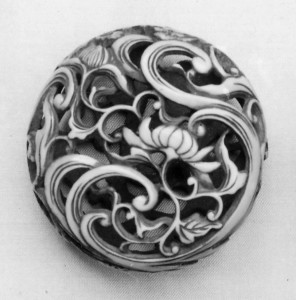Ancient Annular: Dating Joshua’s Eclipse
David Dickinson | Universe Today
Astronomy turns up in fascinating junctures in history. Besides just the romantic angle, we can actually pin down contextual events in ancient history if we can tie them in with a spectacle witnessed in the heavens. A recent look at the story of…
Juno Buzzes Jupiter a Mere 4,300 Km’s Above the Cloud Tops
Matt Williams | Universe Today
On July 4th, 2016, NASA’s Juno spacecraft made history when it became the second mission to establish orbit around Jupiter – the previous being the Galileo spacecraft, which orbited the planet from 1995 to 2003. Since that time, it has circled the massive gas giant three times, collecting data on…
The Race To Image Exoplanets Heats Up!
Matt Williams | Universe Today
Thanks to the deployment of the Kepler mission, thousands of extrasolar planet candidates have been discovered. Using a variety of indirect detection methods, astronomers have detected countless gas giants, super Earths, and other assorted bodies orbiting distant stars. And one terrestrial planet (Proxima b) has even been…
Meteorite Confirms 2 Billion Years of Volcanic Activity on Mars
Evan Gough | Universe Today
Mars is renowned for having the largest volcano in our Solar System, Olympus Mons. New research shows that Mars also has the most long-lived volcanoes. The study of a Martian meteorite confirms that volcanoes on Mars were active for 2 billion years or longer.
A lot of what we know about the volcanoes on Mars we’ve learned from Martian meteorites that have made it to Earth. The meteorite in this study was found in Algeria in 2012. Dubbed Northwest Africa 7635 (NWA 7635), this meteorite was actually seen…
NASA’s Opportunity Rover Celebrates 13 Amazing Years on Mars
Paul Scott Anderson | Planetaria
Thirteen years. That is how long NASA’s Opportunity rover has now been exploring Meridiani Planum on Mars; not bad for a robot which was designed with a hoped-for nominal 90-day mission. Today marks the 13th anniversary of the landing of Opportunity, on Jan. 24, 2004 PST (Jan. 25, 2004 UTC). The mission since then has been nothing short of incredible, as Opportunity soon found evidence that Meridiani Planum used to be a much wetter place than it is now. It was a place where microbial life could have existed; whether it actually did or not is still unknown but Opportunity continues to…
Almost A Year Ago Today We Heard What Gravitational Waves Sound Like
Brad Rogers | The Evolving Planet
In case you missed it, on Thursday February 11 scientists from the Laser Interferometer Gravitational-Wave Observatory (LIGO) announced they had detected gravitational waves for the first time in history. If you don’t follow news about space often then this may not sound like a big deal but let me assure you, it’s a HUGE deal. It’s actually one of the biggest astrophysical discoveries ever.
To make this discovery even more awesome, this proved a theory put forth by…
Richard Hatch Who Was Captain Apollo in the Original Battlestar Galactica Has Died
Brian Wang | Next Big Future
Frak, Richard Hatch of Battlestar Galactica has died
“Richard Hatch was a good man, a gracious man, and a consummate professional. His passing is a heavy blow to the entire BSG family,” tweeted Ronald D. Moore, creator of the Battlestar Galactica reboot.
Spacex Could Launch Nearly as Many Times in 2017 as They did From 2010 to 2016
Brian Wang | Next Big Future
SpaceX was approaching that pace last autumn, before the Sept. 1 accident, which happened during a routine preflight test. The explosion destroyed a $200 million Israeli satellite and heavily damaged the launch pad.
Shotwell said repairs to the launch pad at Cape Canaveral Air Force Station, which are still underway, should cost “far less than half” of a new launch pad, which she said runs about $100 million. The new launch pad is at NASA’s Kennedy Space Center, just north of the Cape Canaveral site.
SpaceX is also modifying the rocket’s engines to…
Reach Back To Go Forwards: Supporting Women And Girls In Science
Kimberly Arcand | The Huffington Post
The United Nations declared February 11, 2017 to be the International Day of Girls and Women in Science.
It’s possible to think that such a designation would be superfluous in this day and age. Many groups have been talking about the need for equality in the fields of science, technology, engineering, and math (“STEM”) for decades. By now, it would be easy to assume, these areas should have an equal playing field.
Unfortunately…
See, I told you! Next Carnival, #497, is scheduled to show up on Universe Today so watch for that!
In case you hadn’t heard, “On February 7, 2017, The Metropolitan Museum of Art implemented a new policy known as Open Access, which makes images of artworks it believes to be in the public domain widely and freely available for unrestricted use, and at no cost, in accordance with the Creative Commons Zero (CC0) designation and the Terms and Conditions of this website.” ~The Huffington Post
I shared Netsuke of Water and Chrysanthemum (Kikusui) after browsing hundreds of images – it seemed so festive! To see their Open Access Policy, click the link.







































Pingback: Carnival of Space #496 - Universe Today
Pingback: Carnival of Space - Universe Today
Pingback: Carnival of Space #496 | CosmoQuest Blog
Pingback: Carnival of Space #496 | WRAC
Pingback: Carnival of Space #496
Pingback: Carnival of Space #496 – DailyNews Space
Pingback: Carnival of Space #496 – Universe Today | Flippinhuge